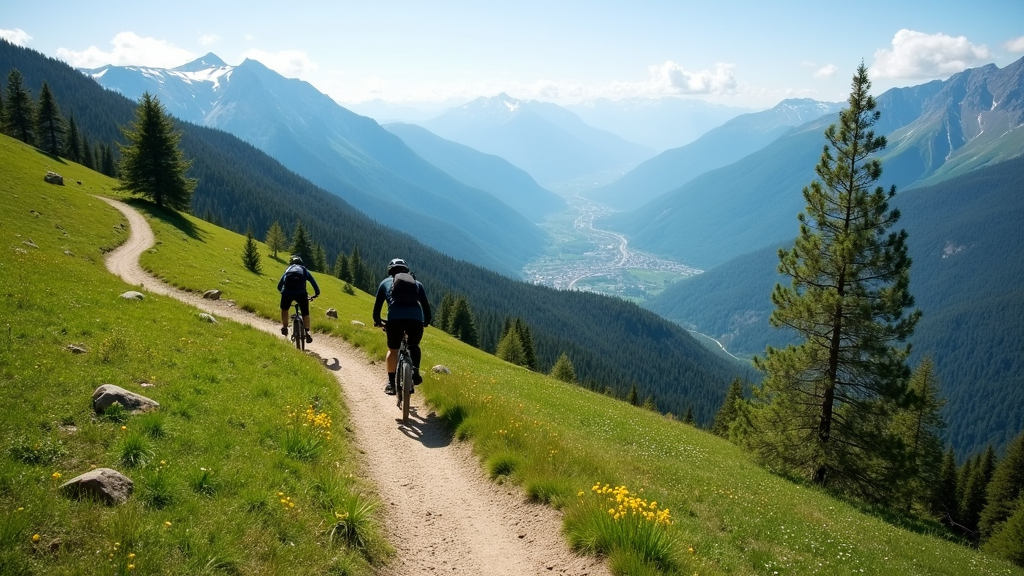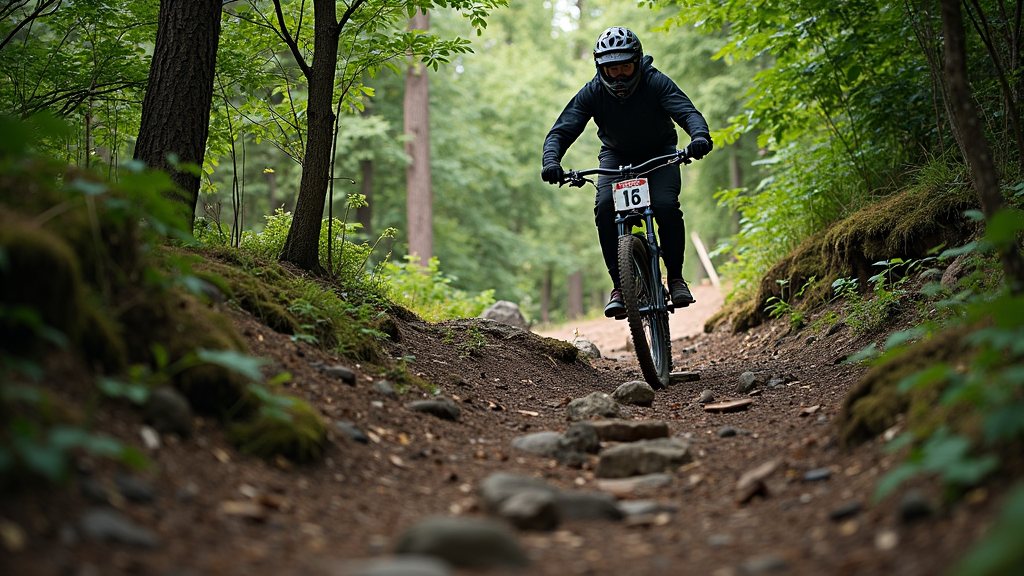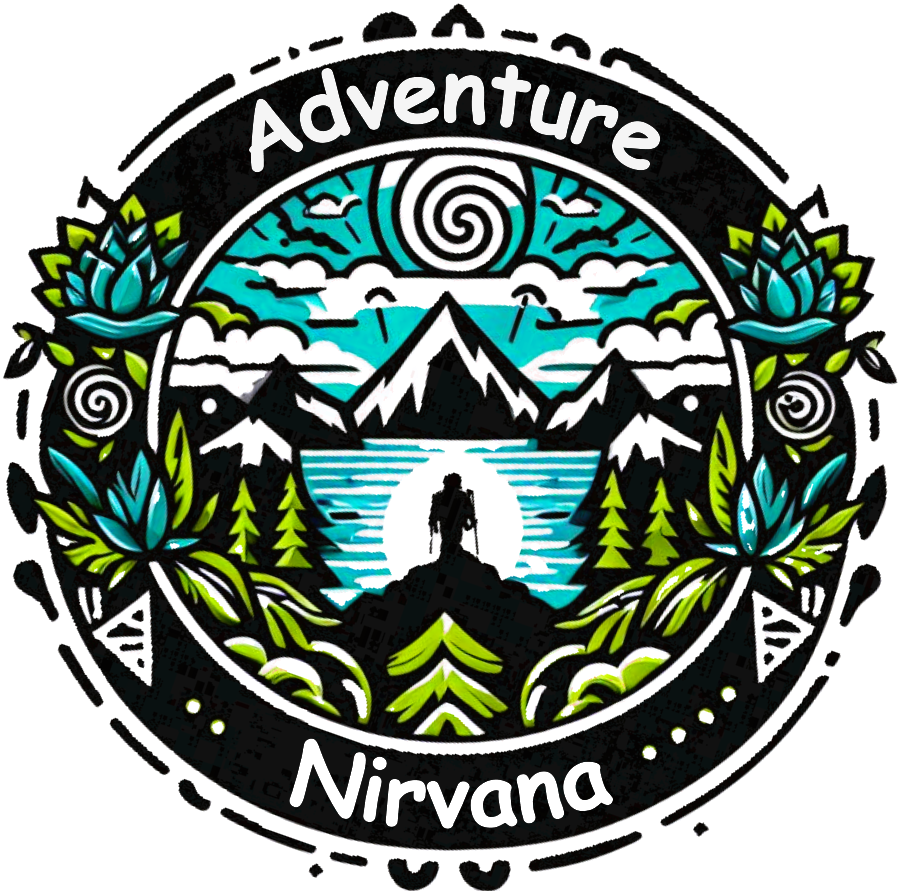Smooth flow or pure mayhem? There are trails for every kind of rider!
Mountain biking is one of my favorite ways to spend time outdoors. There’s just something really satisfying about taking on new terrain, soaking up Amazing views, and testing my skills in places I never thought I’d explore on two wheels. From twisty singletrack to flowy descents, mountain biking trails cater to all sorts of riders. Whether you’re a total beginner, a thrill-seeking adrenaline junkie, or someone who just wants a bit of challenge mixed with a whole lot of fun, there’s a trail out there for you.

Why Trail Variety Matters for Mountain Bikers
Choosing the right trail is a big deal in mountain biking. The type of terrain, the level of difficulty, and even the scenery can totally change your day on the bike. Some trails are mellow and wide with gentle climbs, which are perfect if you’re new to mountain biking or bringing kids along, or even just to have a pleasant ride in the nature. Others are packed with technical features such as rocks, roots, steep drop-offs, and super tight switchbacks. Every trail offers a mix of experience, and having variety means you’ll always find a route that matches your mood, skill, or goals for the ride.
Trail systems usually post info about what to expect: trail ratings, maps, and a heads-up about current conditions. Many towns and cities are putting resources into new bike parks or expanding networks to include even more fun and challenging mountain biking trails for cyclists of every level. That’s great news if you’re searching for “mountain biking trails near me” or looking to try something new when traveling. With so many new trails being developed, there’s always something fresh just around the corner.
Beginner Friendly Mountain Biking Trails
Getting your start on easier trails can seriously build confidence. Beginner mountain biking trails are typically smooth with few obstacles and just little technical demand. They’re also a sweet choice for warming up before tackling something crazier. Here’s what you’ll often find on these trails:
- Wide Pathways: Lots of space for comfortable riding and easy passing without feeling cramped.
- Gentle Grades: Minimal steep climbs or descents so you can get used to shifting and braking at your own pace.
- Clearly Marked Features: Trail signs, color-coded markers, and straightforward trail maps help you stay on track and minimize confusion.
Some of the best beginner trails include the Green Loop at Kingdom Trails in Vermont and the Buena Vista River Park Trails in Colorado. These flowy, scenic rides show off the landscape and let you practice as you go.
Many local and state parks now have their own beginner-friendly loops designed just for newcomers, so check out what’s nearby, and don’t be afraid to ask local riders or bike shops for recommendations.
Top Fun and Challenging Mountain Bike Trails
If you’re chasing something more demanding, there are plenty of challenging mountain bike trails that push you further. Advanced mountain biking trails aren’t just about being harder; they offer big rewards, from epic descents to tricky technical sections to the best views around. Some popular trail areas known for fun and challenge include the following:
- The Whole Enchilada, Moab, Utah: Known for a wild mix of cliffs, ledges, and singletrack, this trail is a must if you love adrenaline-pumping rides with dramatic scenery.
- The North Shore, British Columbia: Famous for its “skinnies,” ladders, and wood features, these technical mountain biking trails are all about balance and creative control.
- Bentonville, Arkansas: Quick climbs, chunky rock gardens, and creative features on trails like Slaughter Pen keep things interesting for advanced riders and continue to grow in popularity.
- Pisgah National Forest, North Carolina: Steep gradients, root networks, and fast descents. The Black Mountain Trail is a tough one, but really worth it for experienced mountain bikers willing to take on a challenge.
Technical Features That Make Trails Challenging
If you’re new to the scene, trail ratings can seem confusing. Knowing the usual technical features can make it easier to choose the right trail:
- Rock Gardens: Stretches packed with rocks, requiring balance and steady handling.
- Drop-offs: Sudden changes in elevation, which can be a blast for advanced riders (and a bit intimidating for beginners).
- Switchbacks: Super tight turns that test your bike control and line choice.
- Manmade Features: Things like berms, jumps, wooden bridges, and ramps add fresh challenges and fun to a ride.
- Steep Climbs and Descents: Longer and steeper sections demand solid fitness and confident braking technique. Be sure to assess your readiness; there’s nothing wrong with walking a section if it looks a bit much.
Most trail networks (but not all) use a system similar to ski slopes: green for easy, blue for intermediate, black for advanced. Always check the trailhead sign or local guide before heading out, especially if you’re not sure of what’s ahead. It’s always better to take a few minutes looking at the map than ending up on the wrong trail.
Scenic Trails for the Best Riding Views
Not every trail needs full-on technical skill. Sometimes a fun ride with beautiful scenery is exactly what you need sometimes. Scenic mountain biking trails are all about taking it slow, breathing in mountain air, and soaking up views of forests, rivers, or coastlines. Here are a few beloved trails worth tracking down. Just for their eye-capturing views:
- McKenzie River Trail, Oregon: Ride through mossy old-growth forest and past waterfalls for an enchanting experience.
- Downieville Downhill, California: Enjoy sweeping views of Sierra Nevada peaks and fast, flowy descents surrounded by wild natural beauty.
- Rim Trail, South Dakota: Cliffs, pine forests, and wide open prairies make every turn photo-worthy and memorable.
Finding beautiful trails can be just as rewarding as nailing a tough technical section. Resources like MTB Project and Trailforks offer trail maps and user reviews with plenty of photos to help you plan the perfect ride. Some apps even show seasonal highlights, letting you catch wildflowers or autumn colors at the right time.
Staying Safe and Riding Responsibly on the Trails
Mountain biking comes with its fair share of risk, but a few practical steps go a long way to staying safe (and keeping the trails in good shape for everyone):
- Wear Proper Gear: A well-fitting helmet, gloves, and pads can save you from scrapes or worse.
- Check Your Bike: Give your ride a quick look over before hitting the trail. Brakes, tires, and suspension should all be working smoothly.
- Ride Within Your Limits: There’s no shame in walking a tough feature or skipping jumps if you’re not feeling it.
- Understand Trail Etiquette: Yield to uphill riders, watch for hikers, and avoid riding on muddy trails to prevent damaging the paths for others.
Carry a basic repair kit, water, snacks, and a trail map for longer rides. Weather can change quickly in the hills, so keep an eye on the forecast—especially if you’re riding remote sections. Pack a small first-aid kit and let someone know your route, just in case. Responsible riders are always ready for the unexpected, and often that preparation makes the difference between an adventure and a headache. Winging it sounds cool… until you’re lost, hungry, and out of toilet paper
Trail Maintenance and Community Support
Healthy trails are the result of dedicated volunteer groups and local organizations. Trail work days, maintenance crews, and community support help keep these spaces fun and safe for everyone. Supporting your local mountain biking club, joining a trail building event, or just picking up litter during your ride all make a difference. If you’d like to give back or find out how to get involved, check the bulletin at your usual trailhead or look online for upcoming events. Even small efforts help trails thrive for the next rider.
Advanced Riding Tips for Tackling Tough Trails
Once you’re confident on intermediate terrain, advanced trails can really take your experience up a notch. Here are a few helpful tips for riding through tougher trails:
- Look Ahead: Scan several feet down the trail to spot obstacles early and plan the best line well before you hit a tough section.
- Stay Relaxed: Keep your body loose. Stiff arms and legs make it harder to adjust to bumps and sudden changes, so keep things flexible.
- Control Your Speed: Use both brakes and shift your weight back on steep descents to avoid going over the bars or losing control.
- Practice Features: Take on tricky features in small steps—session specific sections until you’re more comfortable, building skills one at a time to feel confident.
Advanced classes are offered at many mountain biking destinations for those who want to give their confidence a boost or learn techniques like jumping and cornering faster. Check for local workshops or group rides—they often include tips shared by more seasoned riders and may even introduce you to new areas or challenges.

Frequently Asked Questions About Mountain Biking Trails
For anyone starting out or looking to explore new biking spots, here are answers to some common questions:
How do I find mountain biking trails near me?
Many riders use online platforms like MTB Project, Trailforks, or local biking club websites. They let you filter by trail difficulty, length, and location. Talking to staff at your local bike shop is also quite helpful for getting trail suggestions and updates on current conditions. Social media groups and forums can be good for quick answers about trail quality on the day you’re planning to head out. ChatGPT is great for Info too, but always double check to make sure.
What gear do I need for my first mountain biking adventure?
You’ll want a helmet, bike appropriate gloves, and closed toe shoes. Plenty of water and trail snacks for energy. Basic repair gear (a spare tube, pump, and multitool) never hurts, either. If you’re renting a bike or using a rental service near the trailhead, they often include the basics you’ll need to get going right away.
How do I read mountain biking trail difficulty ratings?
Trails most often use a color or symbol system: green circle means easy, blue square is intermediate, and black diamond is advanced. Some systems use double black for the most difficult trails. Always check posted signs they generally mention what color is for what kind of trail as well, and if in doubt, start easy and work your way up to rougher trails as you feel comfortable. Reading user-submitted trail reports online can also help you find out more about current conditions.
Getting the Most Out of Mountain Biking Trail Adventures
Exploring fun and challenging mountain biking trails brings all kinds of rewards. From better skills and new friends to unforgettable stories, there’s so much you can gain. Find a trail that matches your style, prepare with the right gear, and respect the trails so others can enjoy them, too. With so many places worth riding, every trip out turns into a new adventure. The more you ride, the deeper you’ll dig into this awesome sport—and you’ll always have something to look forward to.
Your next adventure starts here, Two wheels. One path. Endless adventure!
